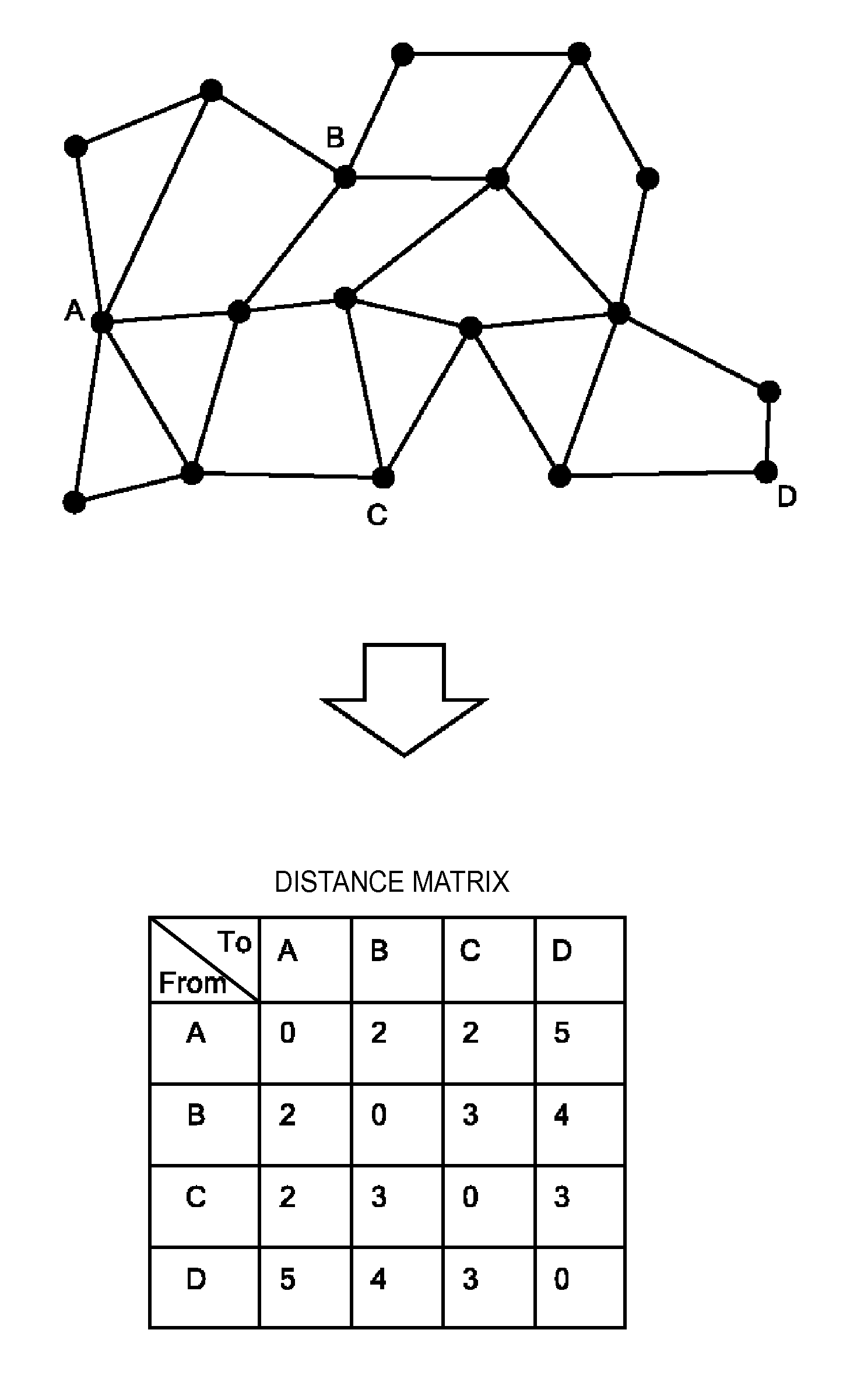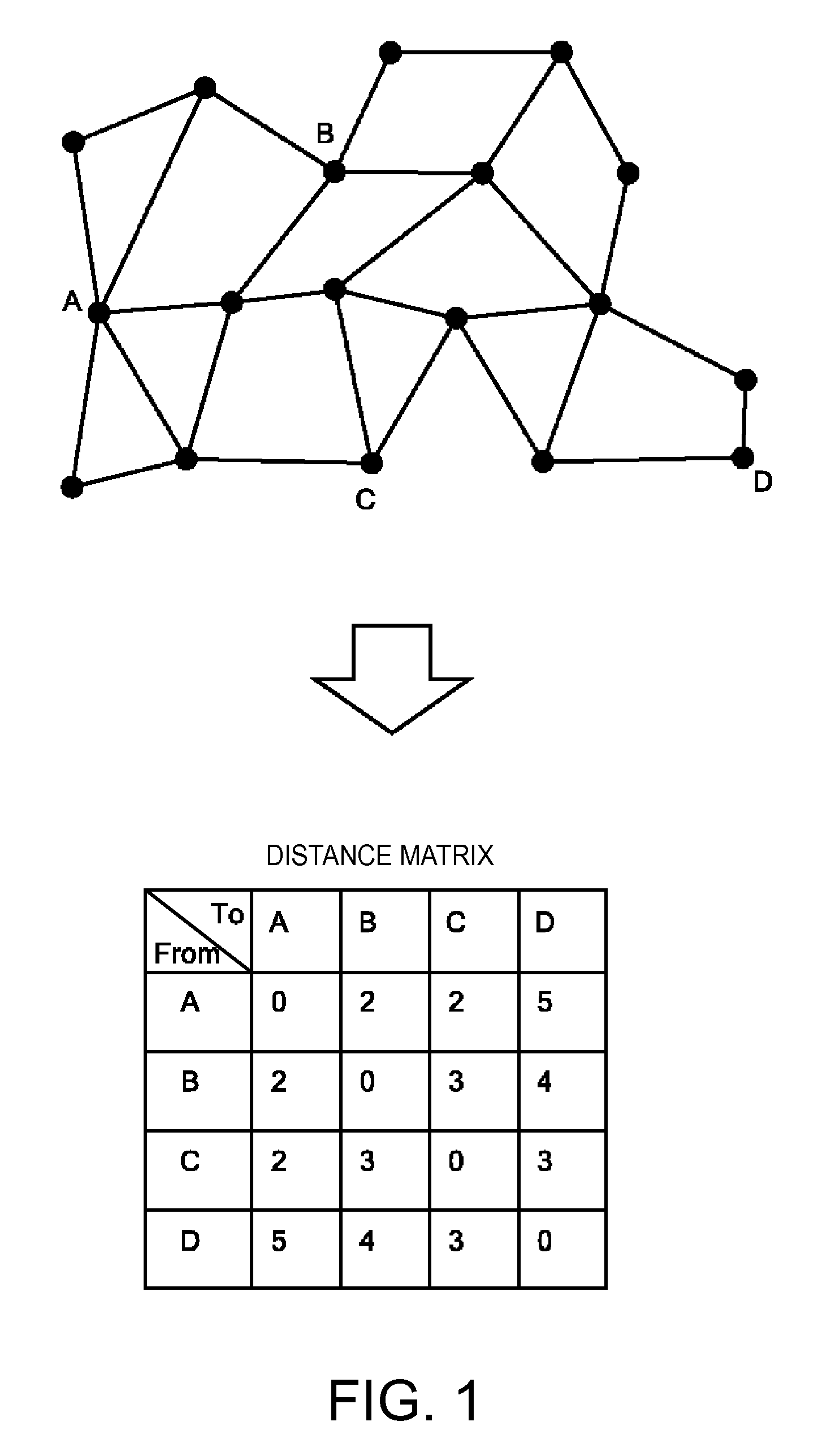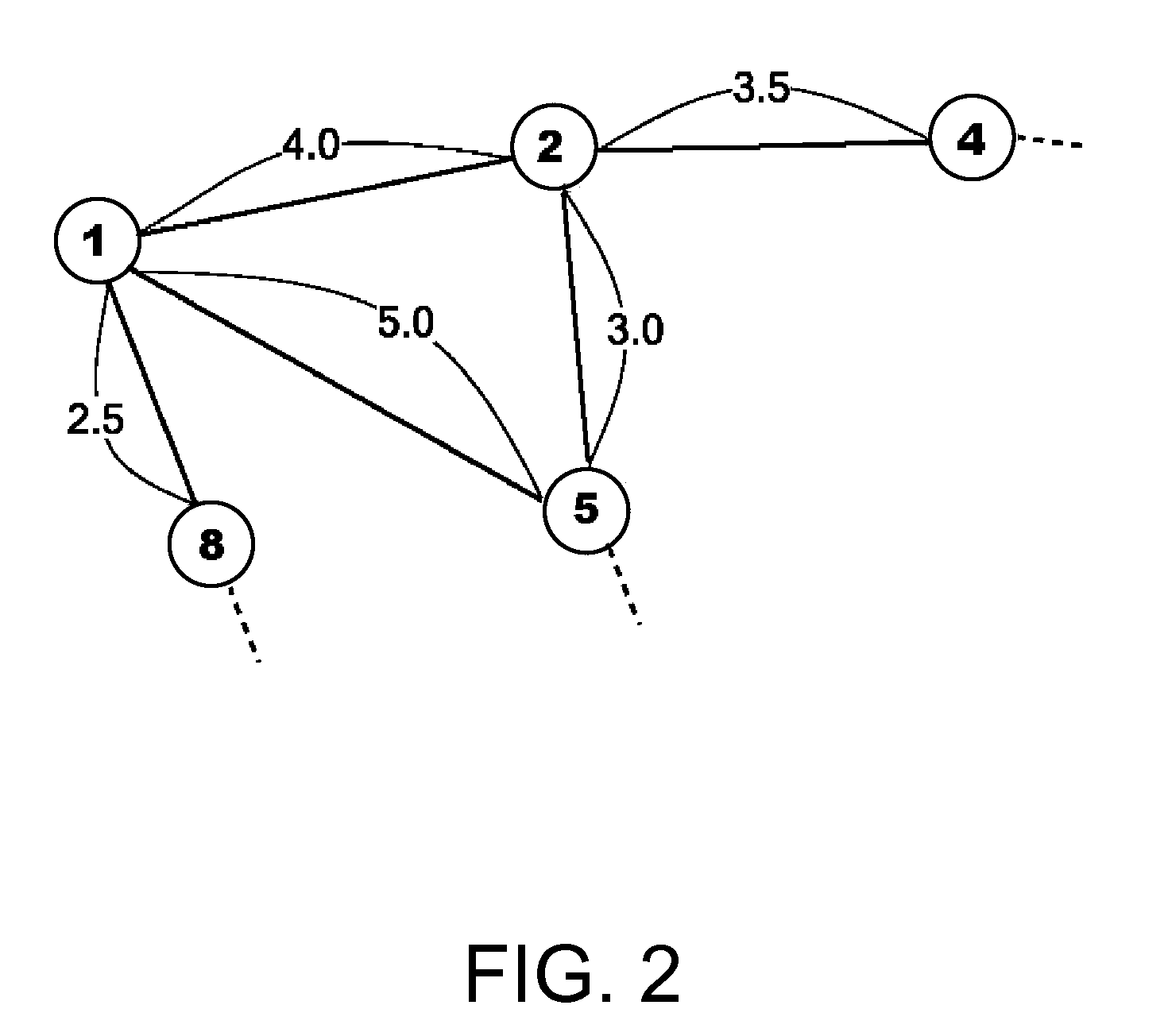Multi-pairs shortest path finding method and system with sources selection
a multi-pairs, shortest path technology, applied in the field of multi-pairs shortest path problems, can solve the problems of not offering a method of solving the all-pairs shortest path problem faster, and not a technique for speeding up the shortest path problem
- Summary
- Abstract
- Description
- Claims
- Application Information
AI Technical Summary
Benefits of technology
Problems solved by technology
Method used
Image
Examples
Embodiment Construction
[0025]The multiple-pairs shortest path problem is a problem in which when a graph G (V, E) consisting of a vertex set V and an edge set E, and a distance d(e) (≦0) for each edge eεE are given, the smallest value of distances from vertices u of all (u, v)εS×T pairs to vertices v is calculated. Especially, when S and T are equal to V, it is called the all-pairs shortest path problem (all-to-all). In the embodiment, the all-pairs shortest path problem is considered as a special case of the multiple-pairs shortest path problem, and both will be described below as the multiple-pairs shortest path problem (many-to-many) without particularly distinguishing therebetween.
[0026]There are many applications of the multiple-pairs shortest path problem, and one of them is an application to GIS (Geographic Information System). A road network can be regarded as a graph, as mentioned above, and the problem of determining distances (or traveling times) between many sites on the road network can be mo...
PUM
 Login to View More
Login to View More Abstract
Description
Claims
Application Information
 Login to View More
Login to View More - R&D
- Intellectual Property
- Life Sciences
- Materials
- Tech Scout
- Unparalleled Data Quality
- Higher Quality Content
- 60% Fewer Hallucinations
Browse by: Latest US Patents, China's latest patents, Technical Efficacy Thesaurus, Application Domain, Technology Topic, Popular Technical Reports.
© 2025 PatSnap. All rights reserved.Legal|Privacy policy|Modern Slavery Act Transparency Statement|Sitemap|About US| Contact US: help@patsnap.com



